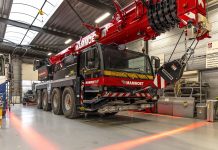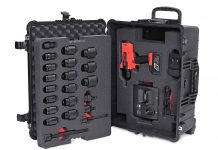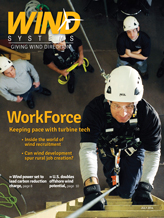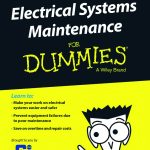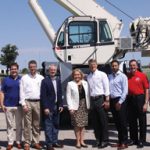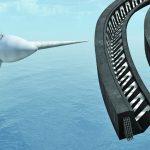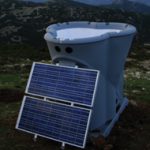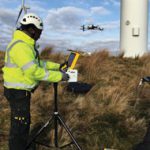The clock starts ticking the moment a wind turbine stops working. Wind turbine efficiency is evaluated in terms of minutes (of production up/downtime) and dollars (spent on after-sales services as a result of system failure). As far as the bottom line is concerned, individual equipment failures and their root causes are moot points.
To maximize efficiency, the ideal wind farm would have in-house resources and know-how to conduct all necessary tests and repairs to restore turbines to full working order. To supplement these capabilities, the wind farm manager works hand-in-hand with OEMs of their turbine equipment to ensure fast turnaround and affordable replacement parts.
Economic realities make this scenwario unrealistic for most wind farms. The manpower and financial resources associated with running a wind farm and operations and maintenance team are often cost-prohibitive. Figure 1
Regarding OEMs, it’s important to remember that they are in the business of making and selling large quantities of the same products. If your defective part is under warranty, ordering a replacement from the OEM is typically a no-brainer. But when component failure occurs off-warranty and you need immediate, cost-effective solutions, you should consider a third-party independent service provider.
From a cost standpoint, purchasing replacement parts at full price from the OEM can be expensive and unnecessary. Wind farms can save millions every year by repairing — rather than replacing — defective components and by purchasing surplus and refurbished inventory.
As a rule of thumb, customers can expect to spend 40–70 percent less on repaired and surplus parts as opposed to new and/or replacement parts. For example, wind farm managers know that a particular replacement pitch system part costs around $5,000 from the OEM. However, when the component is outsourced to an ISP, it can be upgraded with newer technology — resulting in a part that runs cooler and lasts longer — for about 20–30 percent of the OEM replacement cost.
From a value and efficiency standpoint, ISPs are inherently geared toward providing high-quality customer service and technical solutions. In contrast to the OEM’s business model, standardized product design and sales don’t move their financial needle. Rather, these service-centric ISPs invest in engineering staff and advanced diagnostic equipment to help clients resolve production challenges, and their ROI is grounded in their success doing so. For this reason, parts repaired by ISPs often exceed the performance expectations and expected lifetime of new parts from the OEM. Figure 2
Of course, not all ISPs are created equal. Finding a single contractor that can handle a wide range of preventative and corrective repair services (e.g. electronics, hydraulics, precision mechanical, etc.) isn’t easy. Even worse, poor craftsmanship and low-quality parts are major issues in certain corners of the aftermarket/repair industry.
While these concerns can discourage some companies from contracting ISPs, sniffing out disreputable repair shops and counterfeit parts isn’t rocket science. Here’s how you can do it in five minutes or less:
Use Google to your advantage. Run search queries for the company and scan for red flags on the one hand, and articles that establish their reputation as domain experts on the other. Do complaints or scam reports appear in the top search results? What about interviews or feature articles in various news/industrial publications? Do they have a LinkedIn company profile page, and are their employees listed? Can you find pictures of their facilities and testing equipment?
Then, take a critical look at the information on their website. How long have they been in business? If you plug their address into Google Maps / Street View, does everything appear to check out (i.e. approximate square footage and exterior photographs)? Do they provide case studies and press releases that detail specific examples and applications of repair work performed?
Last but not least, what is the length of their typical warranty on services provided? If the ISP has confidence in their craftsmanship, they ought to offer superior warranties. Twelve-month warranties, for instance, offer assurances that the ISP can indeed make the part stronger than the original. Figure 3
In addition to offering cost-cutting repair services and a wide inventory of refurbished parts, some ISPs deliver even greater value by looking beyond a single component repair job toward the greater picture: efficiency. To really make an impact on a wind farm’s efficiency, it’s not enough to simply replace the part. ISPs can substantially increase wind farm efficiency as a whole by digging into the customer’s O&M processes and equipment and finding ways to root out unscheduled downtime and expenses.
OEMs, by contrast, offer the bare minimum — at a premium price point — when it comes to dedicated, value-added customer service and engineering services. Understanding how an individual wind farm uses their equipment — and then determining (and eliminating) the root cause for failure — are capital expenditures that most OEMs often won’t invest in.
PSI Repair Services has been a trusted ISP to the wind energy market since 2008. We offer wind turbine component repair and upgrade services for GE, Vestas, Siemens and Clipper turbines. We cover the critical electronic, hydraulic and precision mechanical components that drive turbine pitch and yaw systems and down-tower electronics. Components we service include printed circuit boards, pitch drive systems (such as H-bridges and hub converters), IGBTs, PLCs, controls, AEBIs, proportional valves, pitch and yaw motors, encoders, slip rings, VRCC units, hydraulic pumps, servo motors, transducers and much more. Most of our services come with a 12-month warranty. Figure 4
PSI has been in the repair business for almost 50 years, with customers belonging to the automotive, aerospace, defense and military, food and beverage, healthcare, public transportation, and semiconductor industries. Our 60,000 square-foot facility in Livonia, Michigan is equipped with the most advanced diagnostic equipment in the industry.
Just recently, PSI Repair Services surpassed the 13,000 mark for components repaired/serviced for the wind industry. At an average repair price of $1,500, and a conservative 50 percent savings from the cost-of-new, PSI has saved the wind industry in the neighborhood of $10,000,000.
Customer savings aren’t merely a result of paying less for repairs, however. PSI’s Engineering Services Department can accurately diagnose performance issues and offer permanent cost-saving solutions by recommending and taking preventive and corrective repair actions. These actions include: removing and replacing stressed parts; improving legacy design with newer, more reliable technology; remanufacturing un-salvageable or obsolete components; as well as manufacturing custom-designed products.
|
|
(800) 325-4774 |
|
www.psi-repair.com/repair-services/wind-turbine-parts-repair |
















